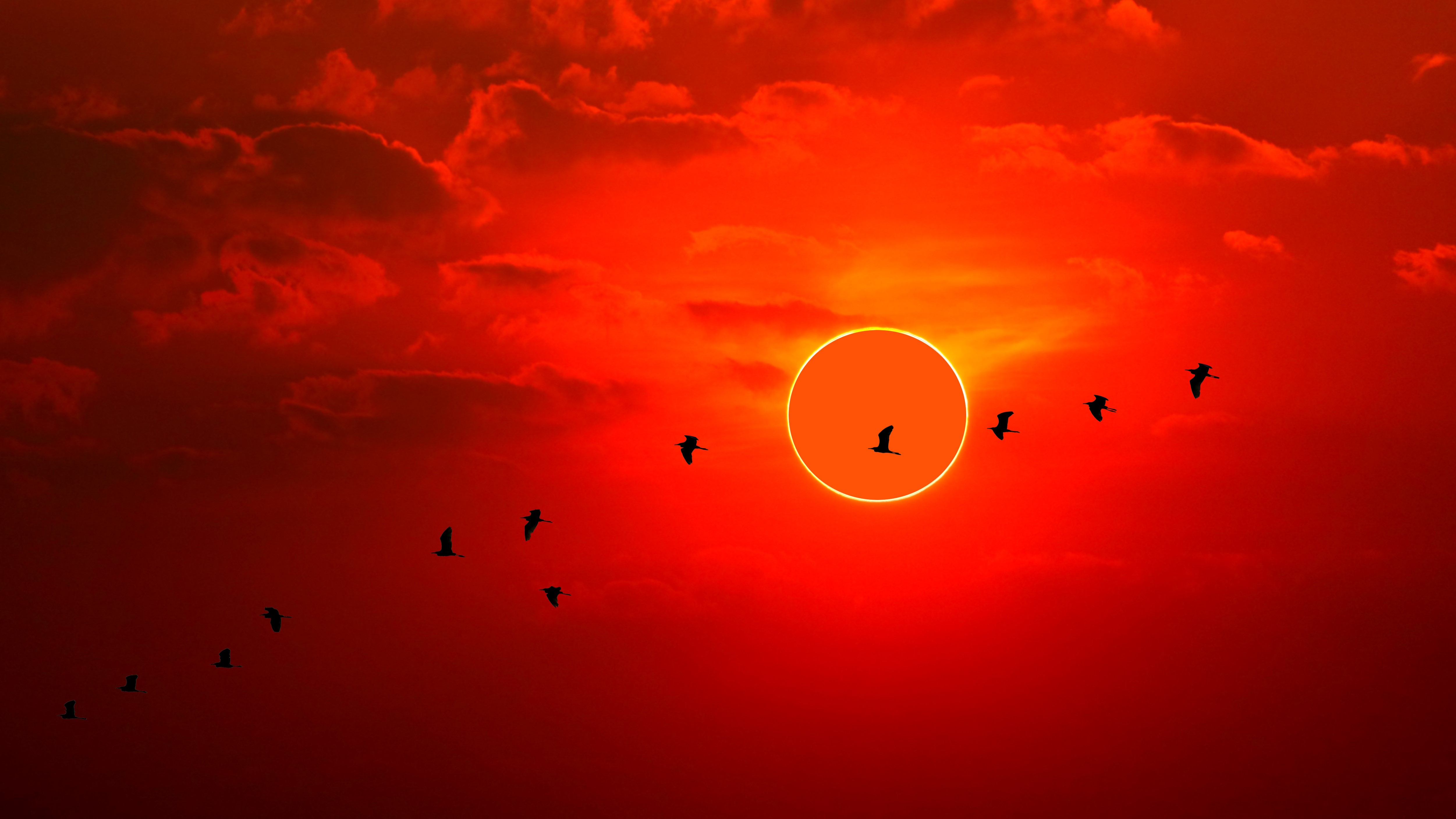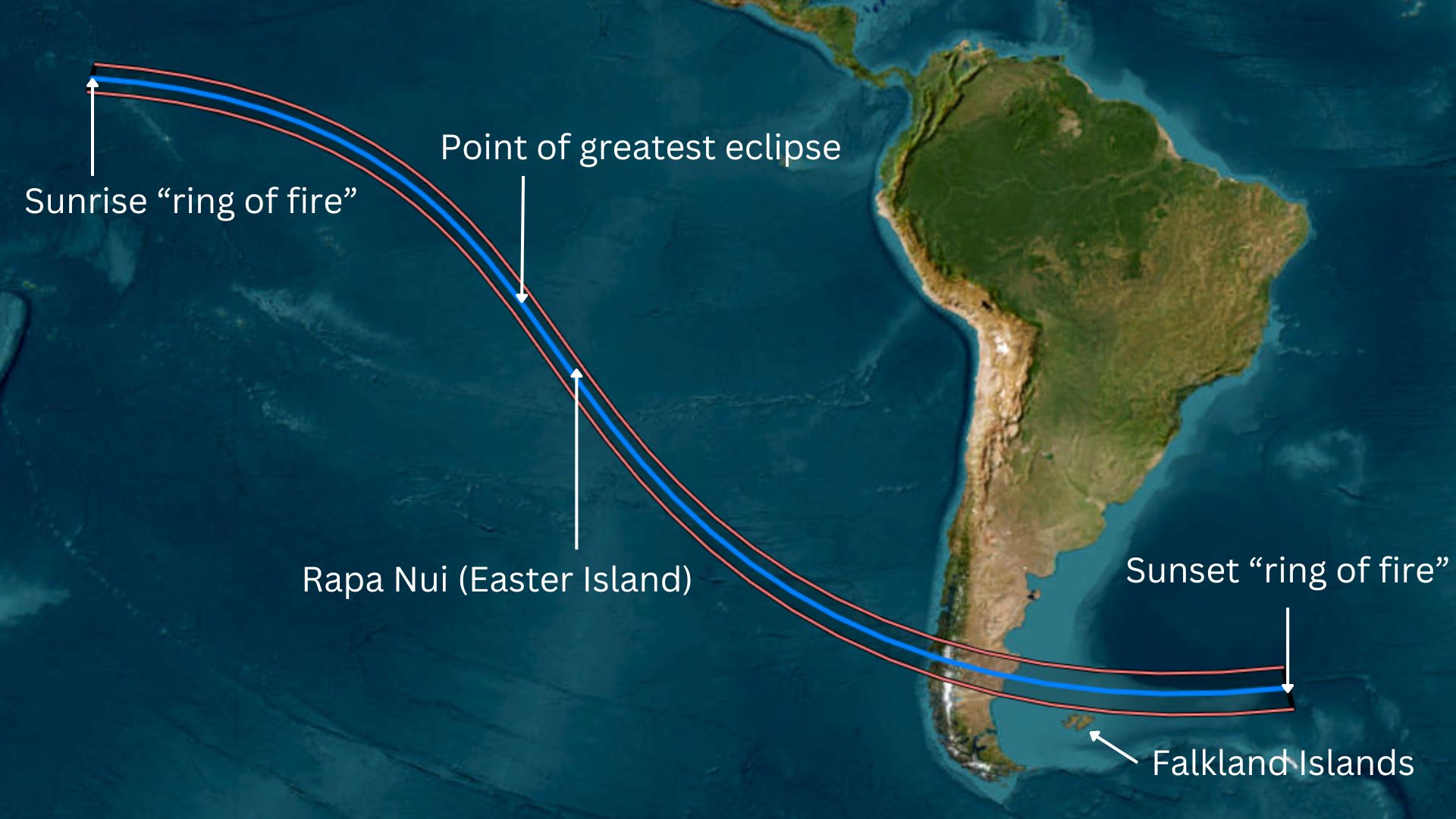1 week until annular solar eclipse turns the sun into a dramatic 'ring of fire'
With just one week until an annular solar eclipse will be visible over parts of the Pacific Ocean, southern Chile and southern Argentina, we take a look at everything you need to know.

On Wednesday, Oct. 2, an annular solar eclipse will be visible over parts of the Pacific Ocean, southern Chile and southern Argentina.
Though the path of annularity — a 165 to 206-mile (265 to 331-kilometer) wide route where the moon will cover up to about 93% of the sun's disk — passes over a small portion of land, eager eclipse chasers unable to watch in person will be able to follow along here on Space.com's solar eclipse live blog and watch the action unfold via numerous livestreams. Details of which will be released closer to the time.
An annular solar eclipse occurs when the moon passes between the sun and Earth, casting a shadow on Earth. During an annular solar eclipse, the moon is slightly farther away from the sun compared to a total solar eclipse whereby it completely obscures the solar disk. Therefore the moon doesn't completely eclipse the sun but instead creates a spectacular "ring of fire."
REMEMBER to NEVER look directly at the sun. To view this solar eclipse safely you must use solar filters at all times. Whether your location will experience a partial solar eclipse or an annular solar eclipse, the dangers are the same. Observers will need to wear solar eclipse glasses, and cameras, telescopes and binoculars must have solar filters placed in front of their lenses at all times.
Our how to observe the sun safely guide tells you everything you need to know about safe solar observations.
Where can I see the annular solar eclipse?

Approximately 175,000 people live within the path of annularity, making this solar eclipse a rather remote affair. If you're unable to view the eclipse in person you can watch all the action unfold live here on Space.com with several livestreams (details of which will be released closer to the time).
Related: Solar eclipse 2024: Live updates
Get the Space.com Newsletter
Breaking space news, the latest updates on rocket launches, skywatching events and more!
Notable locations where the solar eclipse is visible
For an in-depth look at the timings of each stage of the eclipse depending on your location, check out these resources on Time and Date.
- Rapa Nui/Easter Island, Chile (5 minutes, 38 seconds to 6 minutes, 12 seconds of annularity starting at 14:03 EAST, 67 degrees above North)
- Cochrane, Chile (5 minutes, 40 seconds of annularity starting at 17:21 CLST, 26 degrees above NNW)
- Perito Moreno National Park, Argentina (6 minutes, 17 seconds of annularity starting at 17:21 ART, 25 degrees above NNW)
- Puerto Deseado, Argentina (3 minutes, 22 seconds of annularity starting at 17:27 ART, 20 degrees above NNW)
- Puerto San Julian, Argentina (5 minutes, 12 seconds of annularity starting at 17:24 ART, 21 degrees above NNW)
For those outside the path of annularity a partial solar eclipse will be visible whereby the moon appears to take a "bite" out of the sun.
Here are some notable locations where a partial solar eclipse will be visible (along with the percentage coverage of the sun) on Oct. 2, 2024.
- Ushuaia, Argentina (72%)
- Falkland Islands (84%)
- Villarrica, Chile (63%)
- Punta Arenas, Chile (75%)
- Buenos Aires, Argentina (42%)
- São Paulo, Brazil (10%)
Join our Space Forums to keep talking space on the latest missions, night sky and more! And if you have a news tip, correction or comment, let us know at: community@space.com.

Daisy Dobrijevic joined Space.com in February 2022 having previously worked for our sister publication All About Space magazine as a staff writer. Before joining us, Daisy completed an editorial internship with the BBC Sky at Night Magazine and worked at the National Space Centre in Leicester, U.K., where she enjoyed communicating space science to the public. In 2021, Daisy completed a PhD in plant physiology and also holds a Master's in Environmental Science, she is currently based in Nottingham, U.K. Daisy is passionate about all things space, with a penchant for solar activity and space weather. She has a strong interest in astrotourism and loves nothing more than a good northern lights chase!









